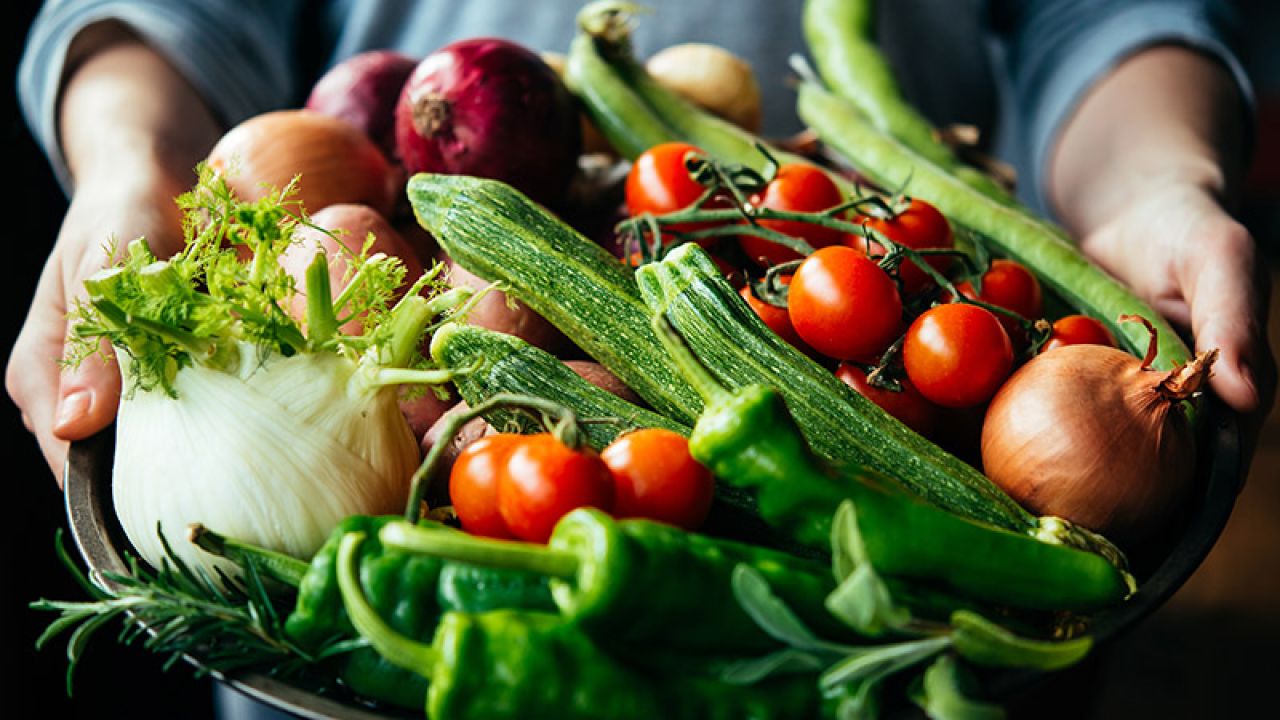
EWG presents a series of guest articles by culinary nutritionist and author of “What the Fork Are You Eating?” Stefanie Sacks exploring the link between a healthier diet and a healthier environment while offering straightforward advice and encouragement to anyone looking to improve their nutrition and protect the planet.
By choice, I avoid using the word “diet” as much as possible. Although its formal definition – food and drink regularly provided or consumed – is benign, the connotation can offend many, thanks to how it’s used by the food industry, mass media, health care and maybe even family and friends.
As a result, “food lifestyle” is my phrase of choice, defined as the way an individual, group or culture relates to food in what, and how, they choose to eat for a healthy life and environment. Food habits, culture, attitudes, nutritional needs and access are all part of the lifestyle.
For nearly three decades, people have shared with me the nuances of what they eat – whether at work, or with family and friends. Hearing people say they’re vegetarian but confess they eat fish, or they’re vegan but feel guilty about sometimes eating eggs, makes me think they’ve suffered some type of food shaming. Never be ashamed of the food choices you make.
Several years ago, I attended a lecture given by a famous physician, clinical researcher, author, vegan and a leading advocate for health and nutrition. During Q&A, I asked: “If you have a patient who seeks your guidance but does not want to adopt a vegan way of life, how do you honor where they are yet guide them toward healthier food choices?” He responded: “I would tell that patient that if they want to be healthy, then becoming vegan is the only answer.”
That kind of absolute, inflexible statement doesn’t help. You can embrace a healthier food lifestyle, based mostly on plants, without becoming vegetarian or vegan.
The 101
A little history: Vegetarianism dates back to 580 B.C.E. There are multiple interpretations, including flexitarianism, pescetarianism, lacto-ovo vegetarianism, lacto-vegetarianism, ovo-vegetarianism and veganism. There’s even something called reducetarian. As a food and nutrition professional, I value each and every way. But a divisive landscape now exists where misinformation, shaming and blaming prevail. Let’s put the judgment aside.
Instead, let’s focus on the good news: Even if a plant-centered food lifestyle, with most or all your calories coming from minimally processed plant foods, seems daunting, it’s easy to start.
Find out where you fall on the plant-centered food lifestyle continuum. Do you eat only plants? Or perhaps you mostly consume meat and dairy and only occasionally plant-based food.
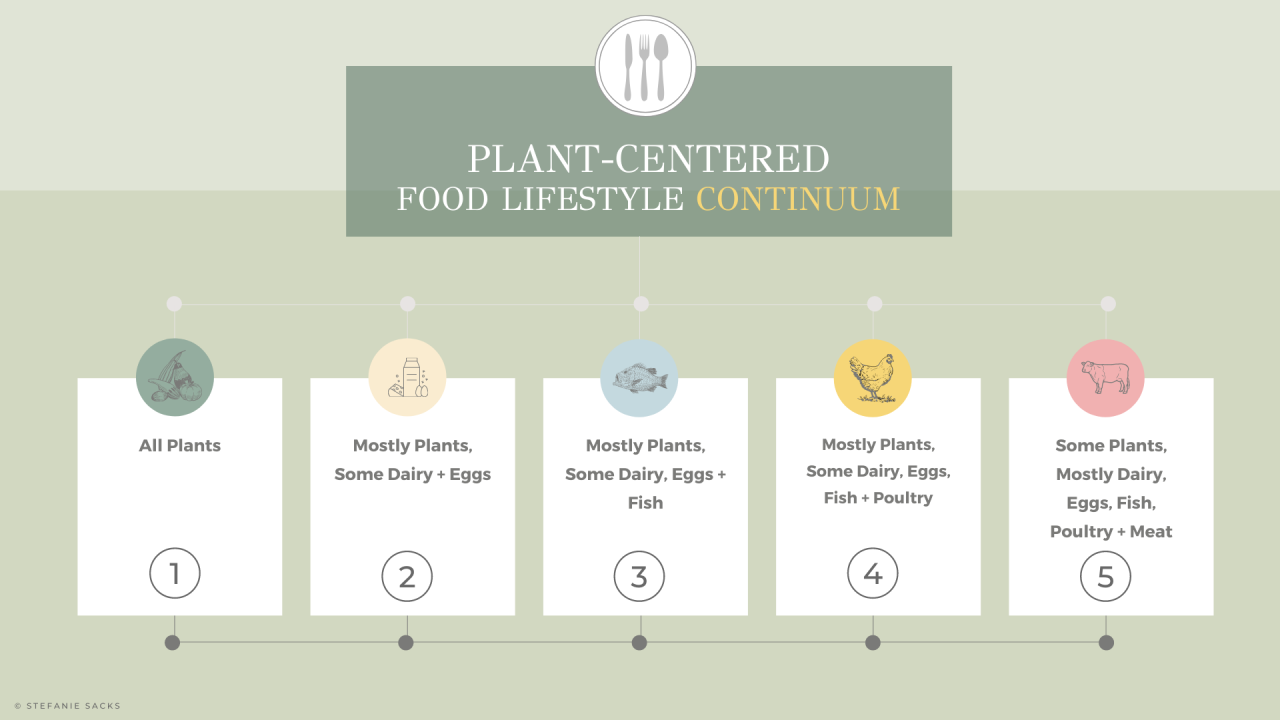
Knowing your place on the range will help you determine how you might want your food lifestyle to change. To assist that journey, consider “conscious consumption” – an exercise all my private clients do.
Download and print the chart below. Then, for five days, write down what you eat, and highlight the food that came from animals. Five days should be manageable, but if not, just three will work.
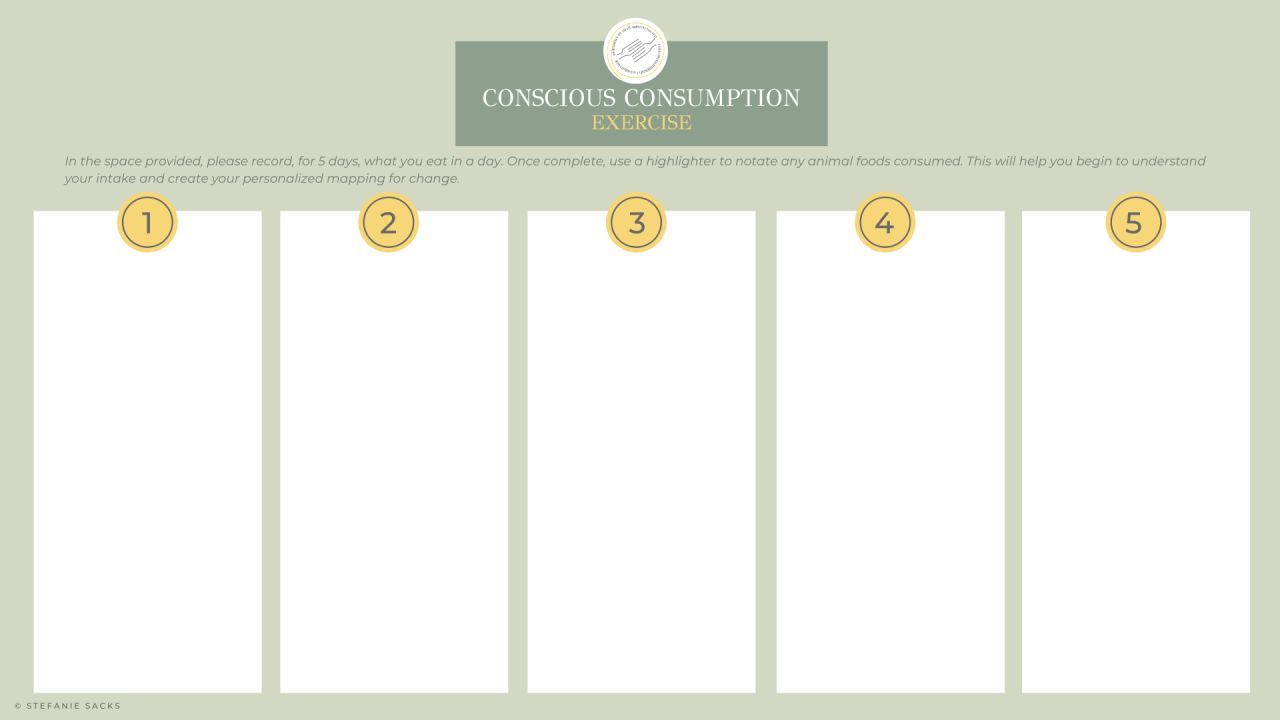
If you’re well on the way to a plant-centered food lifestyle without any of this guidance, keep going! But please make sure you are doing so healthfully.
Starting at home
Eating more plants may sound easy. But if you’re like me, your household includes many personalities and palates. Add a picky eater, like my son Hunter, born with multiple feeding problems (he was unable to coordinate sucking and swallowing as a newborn and developed funny little eating habits), and the simple task of serving something new feels nearly impossible.
Changing what, and how, we eat can feel burdensome. My goal is to usher you toward change that is manageable ultimately reducing consumption of ultra processed plant based proteins as well as other ultra-processed, fatty and sugary foods, all shifts that can support your health.
Find someone to share your journey with
How to begin?
Although my eldest son quickly adopted my food lifestyle, my husband and little guy are a different story. They often eat what I prepare (I refuse to be a short order cook), but if they complain, they’re on their own! If someone in your family can’t or won’t join your process, invite a friend to share this journey. It’s far more enjoyable if you have someone to align with.
Create a personal meal map
With a highlighter, jot down as part of your conscious consumption exercise all the animal foods you consume on a daily basis. Then fill out a Meal Map to see how often on those days you consume food from animals. Armed with that information, you can start to choose a different way forward.
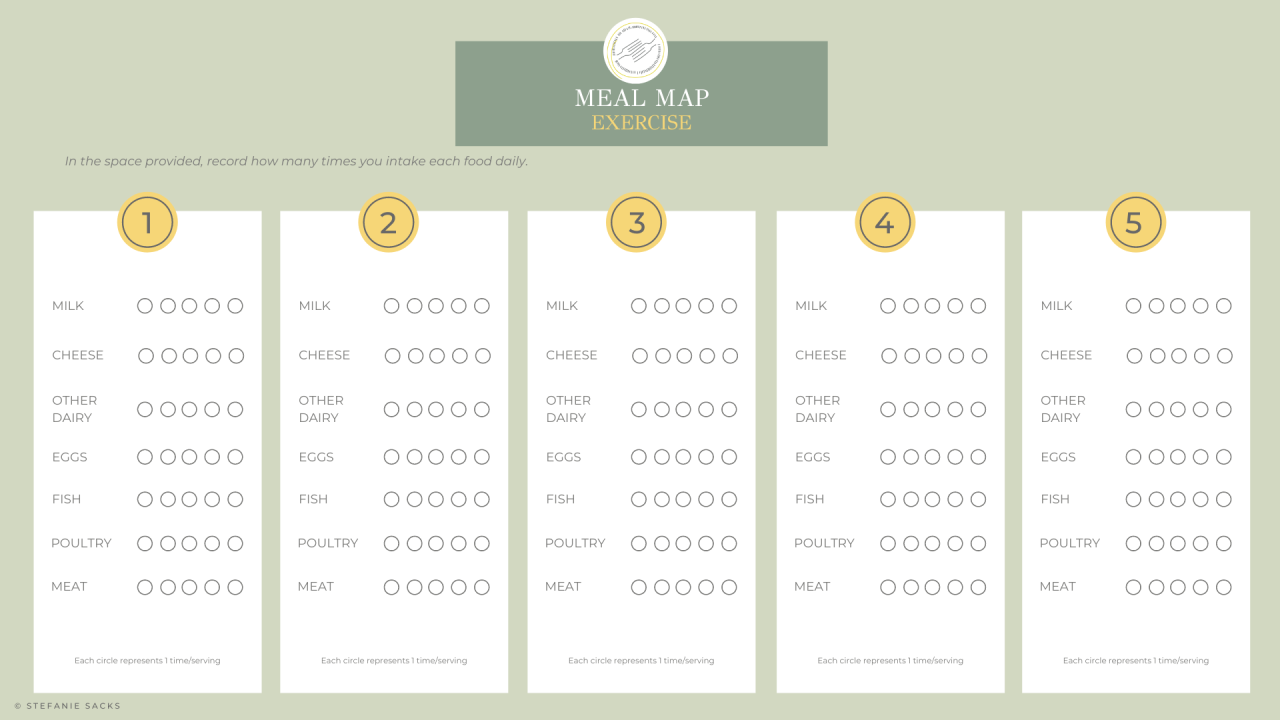
Decrease your animal food consumption by one to two servings or times per day
These lifestyle swaps might seem lofty, but give them a try:
- If you drink milk, consider a dairy-free alternative.
- If you always or often add cheese to your eggs, salads or sandwiches, instead try veggies, beans or a bean dip, which works great as a sandwich spread.
- If ice cream’s your thing, try dairy-free: There are numerous varieties on the market.
- If eggs are a morning must, skip them once a week and try scrambled tofu instead.
- If meat is a regular go-to, even poultry and fish, try to remove it from one meal per day. If you’re used to putting chicken in your salad, and having meat for dinner, swap the poultry in your greens for some beans.
Swap fish and plants for meat
Here’s a challenge: Turn one dinner into a fish feast, or even better, a plant-centered meal. Here are fun and easy plant-based dinners and fish dishes to try. You can also find simple, nutritious and delicious fish, legume and vegetable recipes here.
Eat only plants one day per week
If you’re up to the challenge, how about eliminating all animal foods one day a week? Check out the suggested food and meal options below and see if it’s doable. If so, give it a whirl!
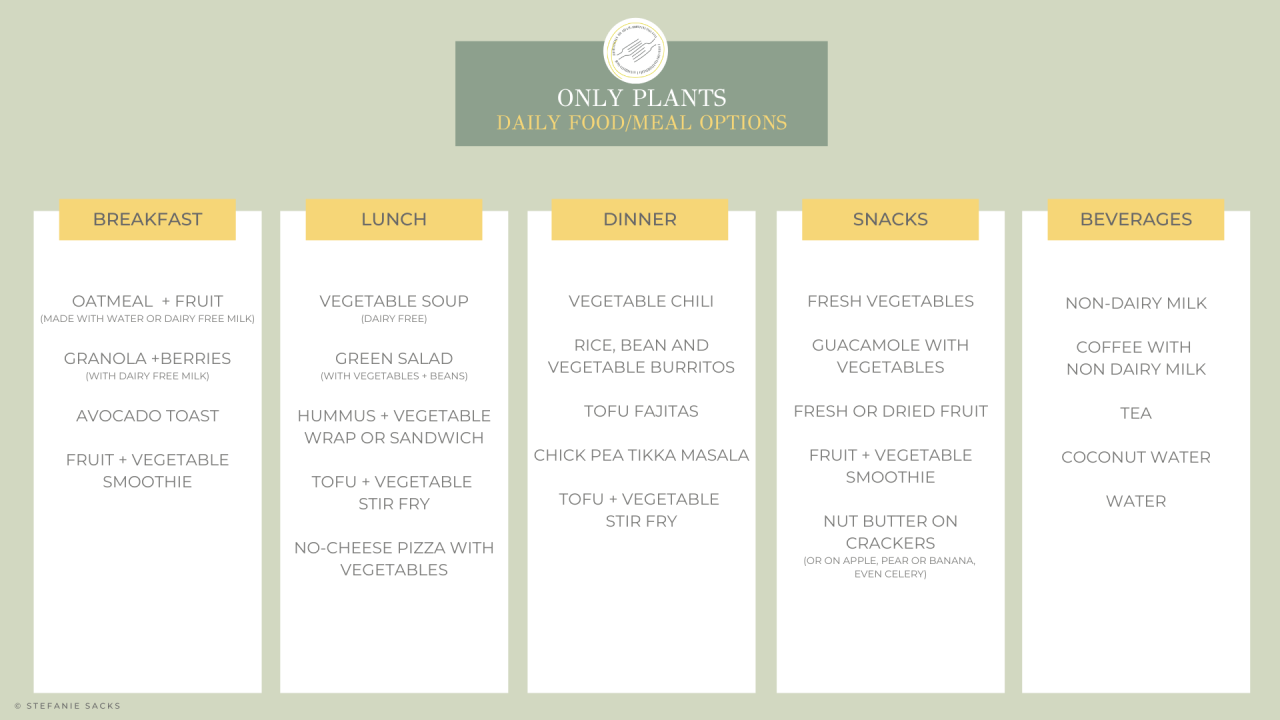
Even these small changes will make a big difference. So please give one or more of them a shot! It’s a process and will take time, but eventually you will find the lifestyle that best suits you, your family and the planet. Just be kind to yourself and others along the way.
One reasonable, achievable approach for transitioning what and how we eat is best modeled by “The Planetary Health Diet” an urgent food lifestyle proposition set forth in the EAT-Lancet Commission Summary Report. It advocates consuming meals made up of half a plate of fruits and vegetables, with the other half consisting mostly of plant proteins, some meat and dairy, whole grains and more.
Let’s hope we can all get there!



